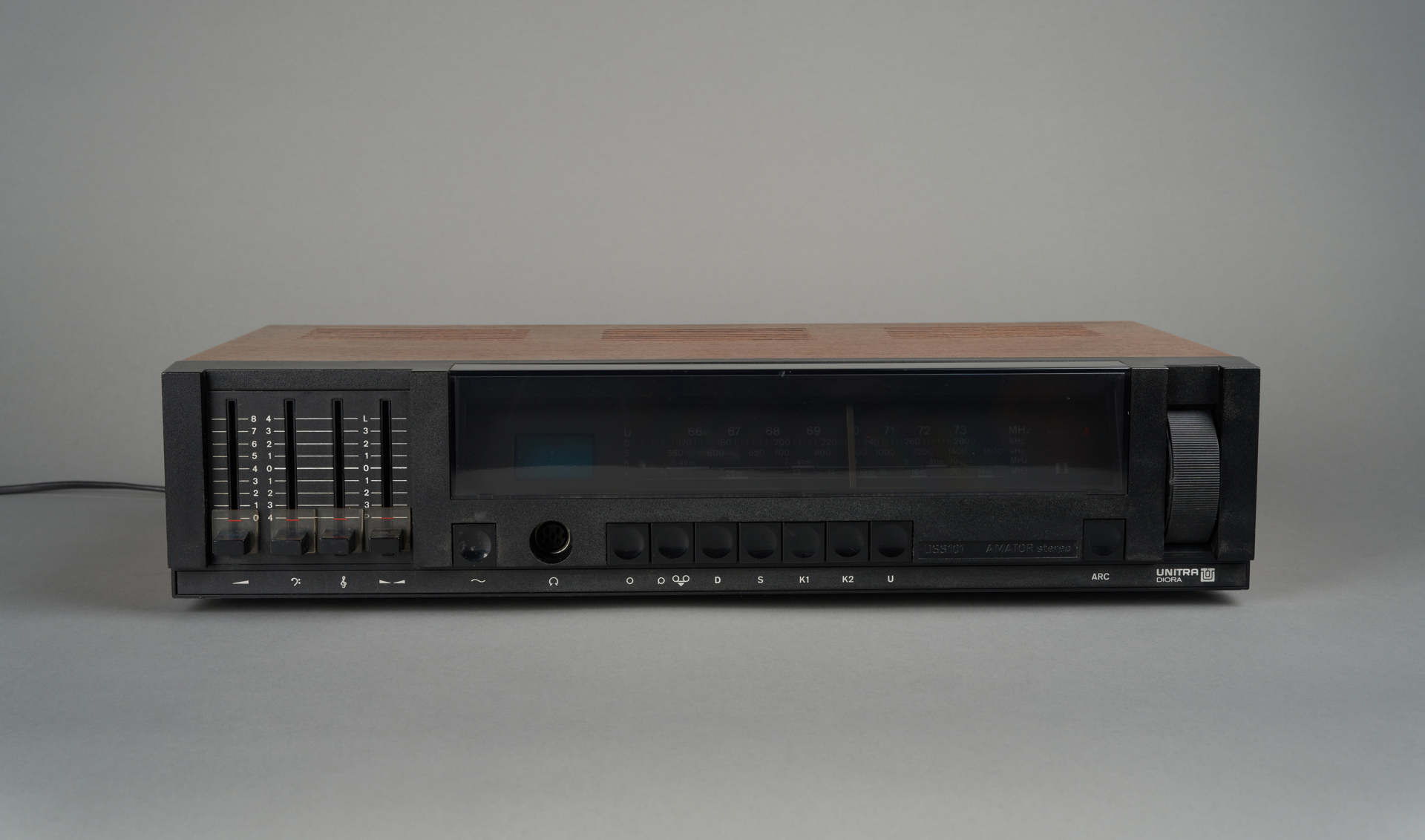
Amator Stereo DSS-101 14901 radio receiver
Zakłady Radiowe Diora, Czerniewski, Janusz, Białek, Mieczysław, Ośrodek Wzornictwa Przemysłowego PTH UNITECH, / 1975Creator
Zakłady Radiowe Diora, Czerniewski, Janusz, Białek, Mieczysław, Ośrodek Wzornictwa Przemysłowego PTH UNITECH
Time and place of creation
Time:
1975
Place:
Poland
The Amator-Stereo DSS-101 is the first widely available, Polish standard class stereo receiver produced by Zakłady Radiowe Diora in 1976–1985. The receiver was designed for a wide range of customers and was distributed at a relatively low price. It was presented for the first time at the Poznań International Fair in the autumn of 1975. Its release coincided with the end of the glory days of radios with a gramophone, and with the discontinuation of the production of vacuum tube radios. It was in the mid-1970s that stereophony became popular.
The design of the Amator-Stereo uses integrated circuits, ceramic and hybrid filters, and a plastic chassis. The receiver is designed to receive long, medium, short (two ranges) and UHF wave. It has a built-in ferrite antenna. It was sold as a set with two compact wooden loudspeakers with Tonsil ZG-10 broad-range speakers.
Thanks to the use of integrated circuits the Amator is flat, and its housing is made of veneered wood. The front plate of the receiver and the loudspeaker grilles are made of black plastic. On the front, on the left side, there are four vertical sliding potentiometers for adjusting volume, tone, and balance. Next to them, behind a transparent cover, is a Varia pendulum tuning indicator, a well-lit scale, and an LED signalling stereo operation. Below there is an earphone socket, radio band switches, and an automatic frequency control system switch. The manufacturer offered the possibility of “changing the graphical layout of the scale” at the customer’s request.
The Amator-Stereo DSS-101 is a receiver through which (according to the Unitra. Radio ‘77/78 catalogue) “the wishes of users are fulfilled, such as modern form, simple control, high quality, reliability and a relatively low price”. In 1974, an opinion poll titled A radio for everyone was run on Polish Radio, in the Trybuna Ludu daily newspaper, and in “Temat – wynalazczość i racjonalizacja” magazine, in collaboration with the Unitra union, which resulted in developing the specification for the Amator model. Thus, it is the first in a series of receivers whose design was based on suggestions submitted by future users. The results of the survey indicated that the radio should be cheap, stereo, tabletop, and have an independent speaker. It should enable the use of a gramophone, tape recorder, and headphones, and it should offer playback at a quality close to hi-fi parameters. The receiver was developed two years later, in a collaborative effort of several institutions. The electrical part was created by a team of designers from the Industrial Telecommunications Institute headed by mgr inż. Janusz Czerniewski. The design was prepared in the Unitech Industrial Design Centre, and the mechanical structure was designed by Mieczysław Białek of Diora.
Authors: Piotr Turowski, Filip Wróblewski
Amator Stereo DSS-101 14901 radio receiver
Zakłady Radiowe Diora, Czerniewski, Janusz, Białek, Mieczysław, Ośrodek Wzornictwa Przemysłowego PTH UNITECH, / 1975Creator
Zakłady Radiowe Diora, Czerniewski, Janusz, Białek, Mieczysław, Ośrodek Wzornictwa Przemysłowego PTH UNITECH
Time and place of creation
Time:
1975
Place:
Poland











